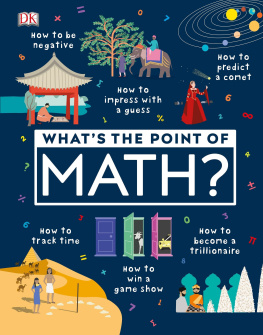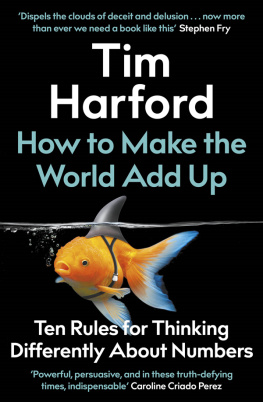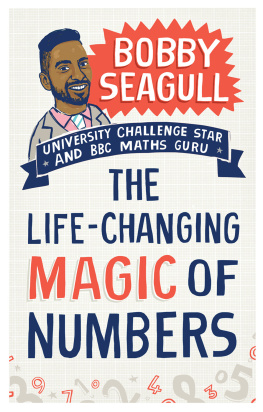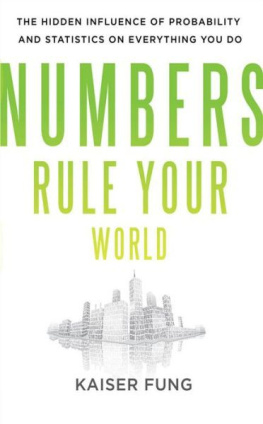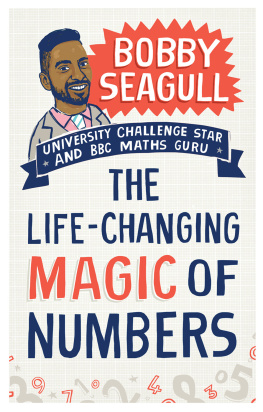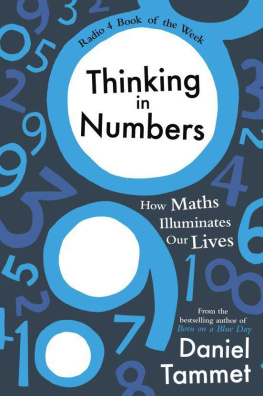Something Doesnt Add Up
Something Doesnt Add Up
Surviving Statistics in a Post-Truth Age
Paul Goodwin

First published in Great Britain in 2020 by
Profile Books Ltd
29 Cloth Fair
London
EC1A 7JQ
www.profilebooks.com
Copyright Paul Goodwin, 2020
The moral right of the author has been asserted.
All rights reserved. Without limiting the rights under copyright reserved above, no part of this publication may be reproduced, stored or introduced into a retrieval system, or transmitted, in any form or by any means (electronic, mechanical, photocopying, recording or otherwise), without the prior written permission of both the copyright owner and the publisher of this book.
A CIP catalogue record for this book is available from the British Library.
ISBN 9781788162586
eISBN 9781782835493
To my wife, Chris
Contents
Introduction
Statistics will solve all our problems
In the early 1970s I got a job as a statistics lecturer at Hull College of Commerce. I was motivated by a passionate belief that teaching people statistics would help to make the world a better place and I used to repeat H. G. Wellss famous quote whenever I encountered doubters: Statistical thinking will one day be as necessary for efficient citizenship as the ability to read and write. Id even rote learned the quote for the job interview and managed to recite it word perfectly in answer to the College Principals last question. I was convinced this had impressed the panel and got me the job.
With the promised arrival of huge computing power, I was sure that statistics would bring light to dark places. It would reveal hidden patterns, linking lifestyle factors to diseases and detecting impediments to productivity in Britains desultory industries. It would allow people to make better decisions either at home or at work and it would serve democracy by enabling them to distinguish the mumbo-jumbo from the facts.
I also found an appealing certainty in statistical calculations. You were either right or wrong. Id read George Orwells Animal Farm when I was much younger and had enjoyed the tale. Years later, someone told me it was an allegory of the Russian Revolution. That worried me. Id read the whole novella and missed the point. At least J. R. R. Tolkien told readers that his Lord of the Rings was not intended to be allegorical. Otherwise, how did you know? I would watch a film in the cinema only to walk home with friends who would fiercely debate what the film was about lost innocence perhaps, or alienation, or existential angst.
Sometimes it seemed that you could twist the book or film to mean whatever you wanted it to mean. Maybe that was the idea of art, but it would have been so comforting to have known what the correct answer was. Of course, it is often said that you can twist statistics to prove anything you want. But, in those days, I thought this could only result from the deliberate misuse of statistics hiding numbers that were inconvenient, using misleading scales on graphs, or repeatedly carrying out small-sample surveys until, by chance, one gave you the result you needed. The honest use of statistical methods, I believed, would lead you to a truth that was indisputable. At least there was no doubt that 6 plus 8 equals 14 or that the mean of 2 and 7 was 4.5.
My attraction to statistics was accompanied by some rapid and exciting developments. We take them for granted now, but at the time they seemed amazing. By the mid-1970s electronic calculators were becoming widely available. People showed me with glee that if you typed 71011345 and turned the calculator upside down, it spelled Shell Oil. Esso Oil was 7100553. Then, as the years went by, it was astonishing to see what computers could do with numbers. With a little tuition you could write Basic programs that whizzed through daunting calculations in seconds. Statistics now came without the tedium of adding up columns or multiplying dozens of numbers on paper. Before computers you had to think hard about what you wanted to measure, and why, because obtaining a result took so much time and effort. You had to be parsimonious and frame your questions tightly. Now there was a temptation to let the computer loose on data, with little guidance, to see what odd things it could uncover. It could show you in an instant whether safer playground equipment was associated with childhood obesity or whether the number of rockets launched into space per year worldwide was correlated with the number of sociology degrees
It seemed as if nothing was real unless you could measure it. I saw a Gallup report in 1981 on satisfaction with life in different countries that showed Northern Ireland scored 7.68 out of 10, while the rest of the UK only mustered 7.67 and that was despite the Troubles Northern Ireland was suffering at the time. Denmark came top of the list and Japan, bottom. Here was measurement to two decimal places. It looked scientific. So a nations satisfaction with life did seem to be a real thing. But what about morality? What about love? Perhaps you could measure a persons heartbeat or their perspiration level when they were told to think about their partner. Combine these measures and you might find that their professed love actually fell below the true love threshold of 5.0. Or perhaps love didnt really exist at all. There are two worlds, a highly mathematical colleague once told me the world of mathematics and the world of waffle. Love clearly belonged to the latter.
Numbers on the march
Fast forward four decades and numbers are triumphant. Datafication involves transforming all aspects of our lives into data. How we sleep, shop, exercise or communicate with friends on social media even our personalities or how we sit in a car or clean our teeth can now be represented by numbers. And all these numbers can be swept up and devoured by that behemoth of our time, Big Data, allowing secret algorithms to build models of who we are and what makes us tick.
But thats not all. When it comes to choosing where to study, where to live or where to seek medical treatment, our decisions are guided by league tables that rank cities, universities, schools, hotels, restaurants and hospitals using precise scores measured to one, two or even three decimal places. Sometimes it feels as Or we are inspired to support the candidate who shakes the most with angry passion when giving their speeches, even though something deep down tells us that what theyre saying doesnt quite seem plausible.
In many areas of our lives numbers have become our master and an unforgiving one too. Serried ranks of workers in call centres are measured on just about every move they make. One worker I know received a message complaining that she had returned from her coffee break 18 seconds late. Percentage of calls answered or missed, average time spent talking, percentage of callers who hung up they lend themselves to pretty graphs on managers screens, but they can be bad news for the worker who has the longest or shortest bar on the chart, depending on what is being measured. Even university lecturers now fear the cursed fate of numerical underperformance. In one scheme, those whose average feedback score from students was less than 3.5 out of 5 were hauled before a committee to explain their failings. In the UK, university researchers are admired if they are sixteen-pointers, which means that, in a relevant period, they have four papers in journals rated at the top level of 4. In some institutions you need to look out if you are a mere eleven-pointer or less.
Next page



